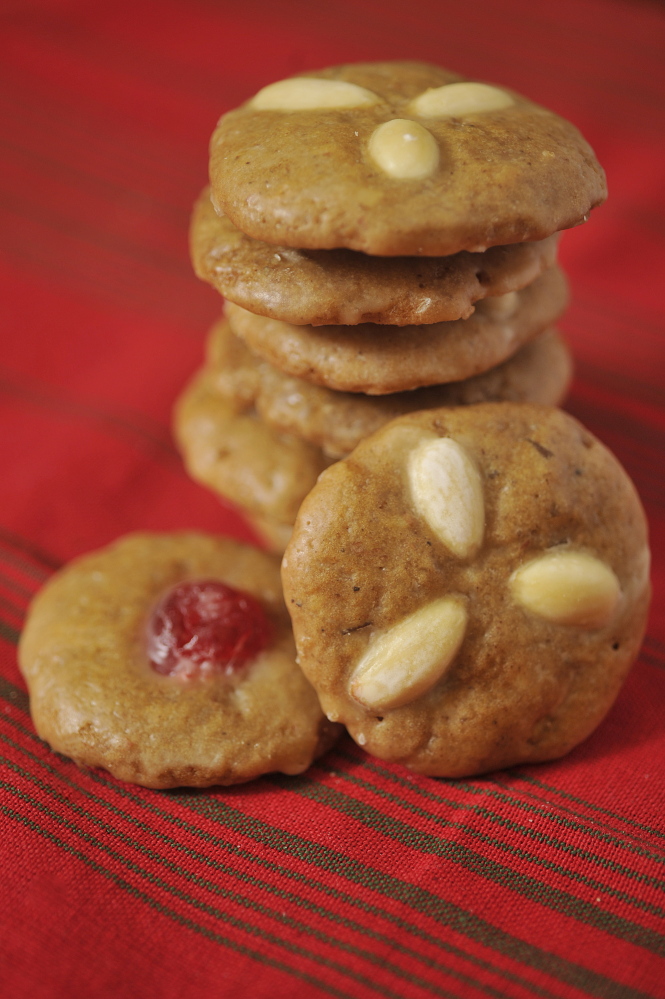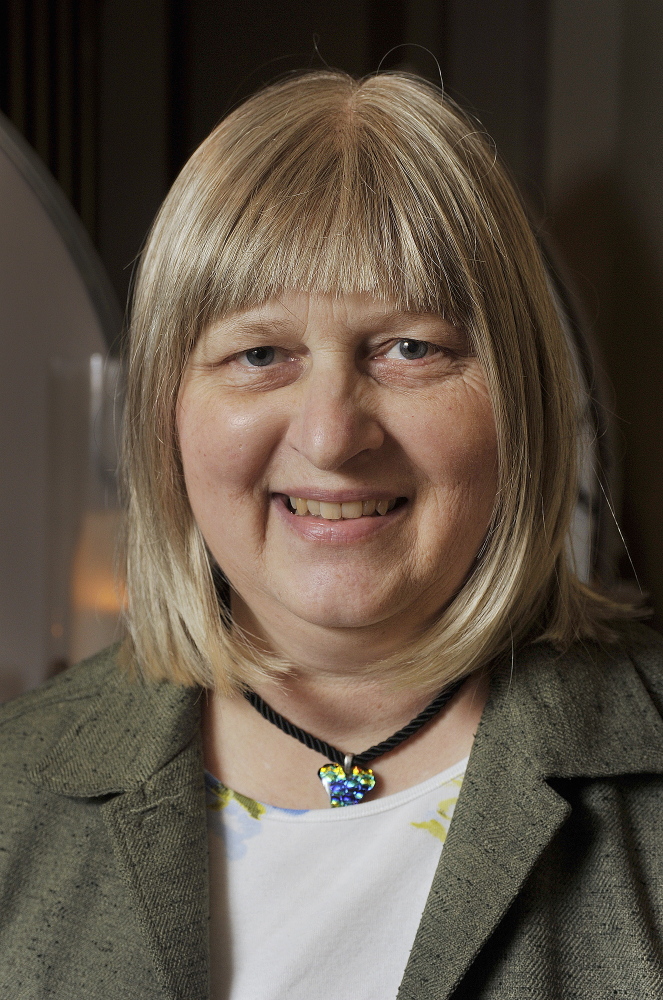Lebkuchen, Carol Marshburn, Gorham
Marshburn’s cookies had perhaps the best story of all the entries. It’s best told in her own words:
“Right after World War II, many people wondered what could be done to promote peace and prevent future wars. A retired gentleman named Gale Seaman asked the American Friends Service Committee (an aid organization working in Germany) to help him find names and addresses of German kids willing to correspond with American kids. Mr. Seaman said, ‘If American kids are pen pals with German kids, we might not have another war with them.’
“In 1947, my mother was a 16-year-old high school junior in Arcadia, Calif. She heard Mr. Seaman’s challenge, and began corresponding with a German girl named Tilla. They shared many personal details of their lives, and my mother learned that her friend’s family could not get even basic baking ingredients such as shortening or sugar in Germany at that time. My mother and grandmother began packing and sending care packages to the family, which took a long time to arrive by ship, but were greatly appreciated. My mother’s friend sent presents in return, such as beautifully knit sweaters and a rolling pin carved with picture blocks to make Springerle cookies.
“My mother and grandmother became interested in all things German, and searched out and tried German cookie recipes. My mother Mary and her friend Tilla met in Germany for the first time in 1975, and are still in touch now, 66 years after their first letters.
“This is how I came to grow up enjoying lemon-anise Springerle and pepper-cardamom Pfeffernusse. Now my Maine kids look forward each year to German holiday cookies. Lebkuchen is my 18-year-old’s favorite.”
Marshburn, a 58-year-old potter, pointed out that Lebkuchen is what the witch’s house was made of in the original “Hansel and Gretel” from Grimm’s Fairy Tales. When the tale was translated into English, the house became a gingerbread house.
The judges liked the “holiday spices” in the cookie. “These were very moist,” Smith said. “They seemed like the kind of cookies my grandparents would have had.”
Makes about 6 dozen
¾ cup brown sugar
¾ cup honey
¼ cup molasses
1 egg
1½ teaspoons grated lemon peel
1 tablespoon lemon juice
2 ¾ cup flour
1 teaspoon cinnamon
½ teaspoon each, baking soda, salt, nutmeg, ginger, cloves, allspice
¼ teaspoon cardamom
4 ounces finely chopped candied citron (Hannaford has this seasonally with the fruitcake ingredients)
½ cup chopped almonds
Glaze:
3 cup powdered sugar
½ cup water
2 teaspoon lemon juice
½ teaspoon almond extract
Whole blanched almonds or candied cherries for decoration
Preheat oven to 350.
Warm honey slightly if it is very thick. Mix together all ingredients except flour. Add flour gradually to make a dough.
Chill dough. Dough will be sticky. Use two spoons to drop small pieces of dough on greased cookie sheets. Use wet hands to roll each piece into a ball. Use glass dipped in water to flatten each ball.
Decorate with blanched almonds or candied cherries. (To blanch almonds, boil whole almonds for one minute. Skins will slip off when cool.)
Bake at 350 for 12-14 minutes. Remove to cooling rack immediately. Cookies should not brown, but if they deform too much when removing from cookie sheet, increase baking time.
For glaze: combine powdered sugar, water, lemon juice and almond extract.
After the cookies are cool, use a pastry brush to glaze both sides of each cookie. Dry on rack until no longer sticky.
Store airtight between sheets of waxed paper for at least one week. The spices and peels need to mellow over time. If you taste the cookies right out of the oven you will be disappointed, but the flavor will improve with each passing day. After two weeks, they are incredible. With no added fat, they do not get stale, and are excellent for mailing.
Send questions/comments to the editors.




Comments are no longer available on this story